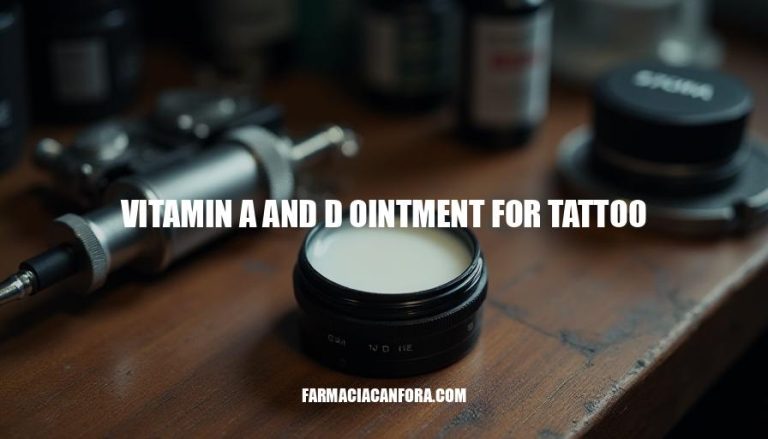


Vitamin A and D ointment is a big help when it comes to tattoo aftercare. Tattoos are basically open wounds that need proper care to heal properly and keep the ink looking its best. This ointment has vitamins A and D, which are good for your skin and help with healing.
One of the main benefits is that it helps the skin heal faster by keeping it moisturized.
If the skin gets too dry, it can lead to scabs and patchy ink. The ointment also acts as a shield, protecting the tattoo from things in the environment that could irritate it or cause an infection.
The ointment has soothing properties that help reduce redness, swelling, and discomfort, making the healing process easier. Tattoo artists often recommend this ointment because it keeps the skin hydrated without blocking airflow.
It’s also gentle enough for sensitive areas, so your skin stays soft and healthy during the healing process.
Clean the Tattoo Area: Begin by washing your hands thoroughly with warm water and soap to prevent contamination. Use a mild, antibacterial soap to gently clean the tattooed area. Avoid scrubbing; instead, pat the area dry with a clean paper towel or cloth.
Inspect for Irritation or Infection: Before applying the ointment, check the tattoo for signs of redness, swelling, or pus.
If any of these symptoms are present, consult a healthcare professional before proceeding.
Apply a Thin Layer of Ointment: Take a small amount of vitamin A and D ointment and gently spread it over the tattooed area. Use clean fingers or a sterile cotton swab to apply the ointment evenly. Ensure the layer is thin—excessive application can clog pores and hinder the healing process.
Avoid Rubbing or Massaging: Do not rub or massage the ointment into the skin.
This can damage the tattoo and prolong healing. Simply let the ointment sit on the surface.
Let the Area Breathe: Allow the ointment to absorb for a few minutes before covering the tattoo or putting on clothing. Avoid tight or abrasive fabrics that may irritate the tattoo.
Repeat as Recommended: Apply the ointment as directed by your tattoo artist, typically 2-3 times a day during the initial healing phase.
Overuse can lead to clogged pores, so stick to the recommended frequency.
Follow Your Tattoo Artist’s Advice: Every tattoo and skin type is unique. Your tattoo artist’s instructions are tailored to your specific situation, so prioritize their guidance over general advice.
Avoid Excessive Moisture: While keeping the tattoo moisturized is essential, avoid soaking it in water or applying too much ointment. Excess moisture can lead to infection or fading.
Monitor Healing Progress: Keep an eye on the tattoo as it heals.
If you notice unusual symptoms like excessive redness, swelling, or pain, seek medical advice promptly.
Avoid Sun Exposure and Harsh Chemicals: Protect your tattoo from direct sunlight and avoid using products with strong chemicals that could irritate the skin.
Proper aftercare ensures your tattoo heals beautifully and remains vibrant. If you have any specific concerns, your tattoo artist or a dermatologist can provide personalized advice.
Incorporating vitamin A and D ointment into your tattoo aftercare routine offers several benefits, including faster healing, reduced redness and swelling, and protection from environmental irritants. The ointment helps to keep the skin moisturized, preventing dryness that can lead to scabs and patchy ink. Its soothing properties also make it easier to manage discomfort during the healing process.
By using vitamin A and D ointment, you can help maintain your tattoo’s appearance and prevent complications such as infection or fading. It is gentle enough for sensitive areas and allows for airflow, making it an ideal choice for tattoo aftercare.
It is essential to follow proper application instructions and consult with your tattoo artist for personalized advice on how often to apply the ointment and any specific concerns you may have. With regular use of vitamin A and D ointment and proper aftercare, you can ensure that your tattoo heals beautifully and remains vibrant.